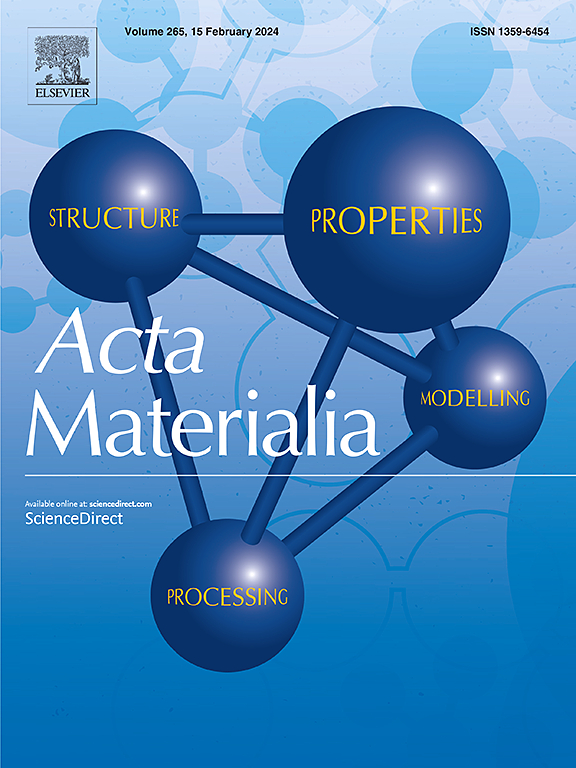Benchmark microgravity experiments and computations for 3D dendritic-array stability in directional solidification
IF 8.3
1区 材料科学
Q1 MATERIALS SCIENCE, MULTIDISCIPLINARY
引用次数: 0
Abstract
In this study, we present a comprehensive quantitative analysis of stability bands for dendritic arrays during directional solidification of a transparent succinonitrile-0.46 wt % camphor alloy, spanning a broad range of pulling velocities. Taking advantage of the microgravity environment aboard the International Space Station where most convection effects are suppressed, we obtain unique measurements that quantify the stable primary spacing range of spatially extended three-dimensional dendritic array structures under purely diffusive growth conditions. Through carefully designed velocity jump experiments and detailed examination of sub-grain boundary dynamics, we characterize key instabilities, including elimination and tertiary branching, shedding new light on the mechanisms governing dynamic dendritic spacing selection in extended 3D arrays. Phase field simulations are performed to characterize the stability limits of dendritic array structures for quantitative comparison with the flight experiments. Although the simulations capture general trends, significant deviations are noted at the upper stability boundary, indicating the influence of additional, unexplored factors. These findings contribute to a deeper understanding of dendritic growth dynamics and offer valuable benchmark data that could aid in refining predictive models and improving control of dendritic microstructures in metallurgical applications.


定向凝固三维枝状阵列稳定性的基准微重力实验与计算
在这项研究中,我们对一种透明琥珀腈-0.46 wt%樟脑合金定向凝固过程中树枝晶阵列的稳定带进行了全面的定量分析,该合金跨越了广泛的拉伸速度范围。利用国际空间站上大多数对流效应被抑制的微重力环境,我们获得了独特的测量结果,量化了纯扩散生长条件下空间扩展的三维树突阵列结构的稳定主间距范围。通过精心设计的速度跳跃实验和亚晶界动力学的详细检查,我们表征了关键的不稳定性,包括消除和三级分支,揭示了扩展3D阵列中动态枝晶间距选择的新机制。通过相场模拟表征了树突阵列结构的稳定性极限,并与飞行实验进行了定量比较。虽然模拟捕获了一般趋势,但在稳定性上边界处发现了显著的偏差,这表明了其他未探索因素的影响。这些发现有助于更深入地了解枝晶生长动力学,并提供有价值的基准数据,有助于改进预测模型和改善冶金应用中枝晶微观结构的控制。
本文章由计算机程序翻译,如有差异,请以英文原文为准。
求助全文
约1分钟内获得全文
求助全文
来源期刊

Acta Materialia
工程技术-材料科学:综合
CiteScore
16.10
自引率
8.50%
发文量
801
审稿时长
53 days
期刊介绍:
Acta Materialia serves as a platform for publishing full-length, original papers and commissioned overviews that contribute to a profound understanding of the correlation between the processing, structure, and properties of inorganic materials. The journal seeks papers with high impact potential or those that significantly propel the field forward. The scope includes the atomic and molecular arrangements, chemical and electronic structures, and microstructure of materials, focusing on their mechanical or functional behavior across all length scales, including nanostructures.
 求助内容:
求助内容: 应助结果提醒方式:
应助结果提醒方式:


